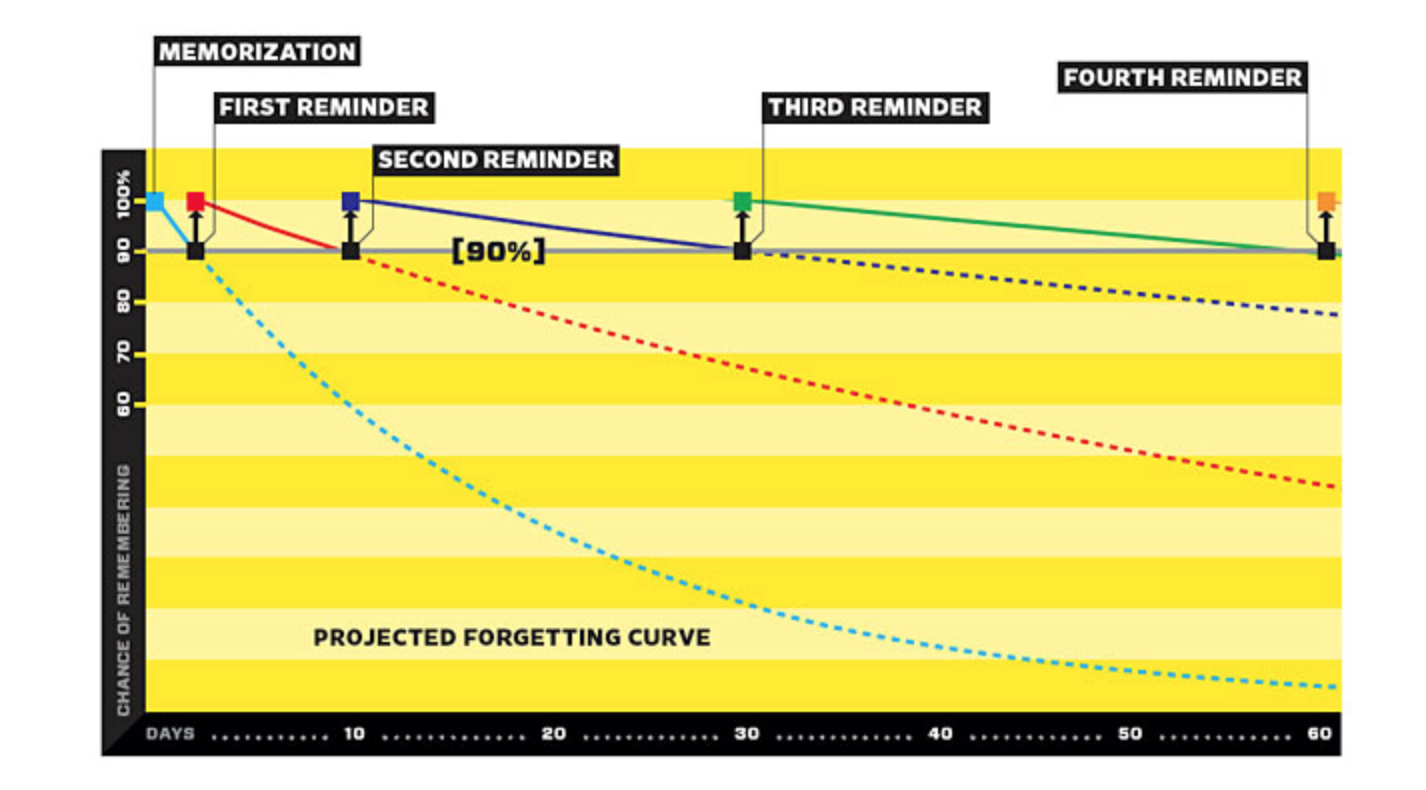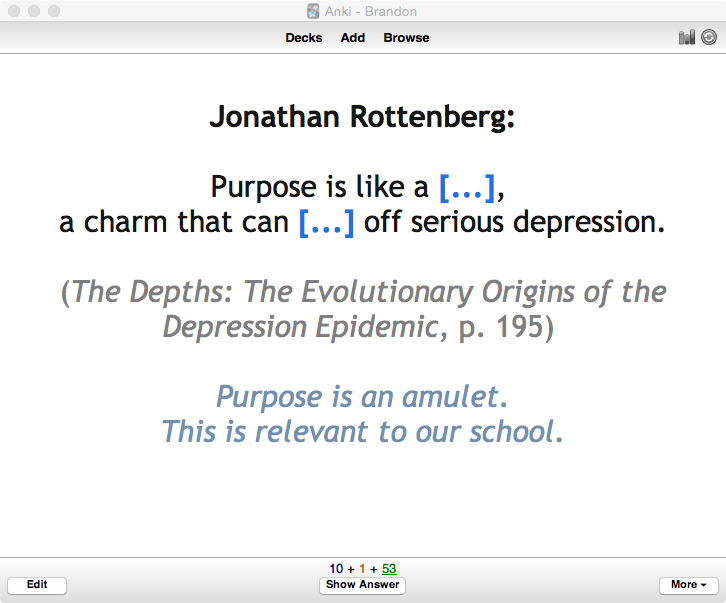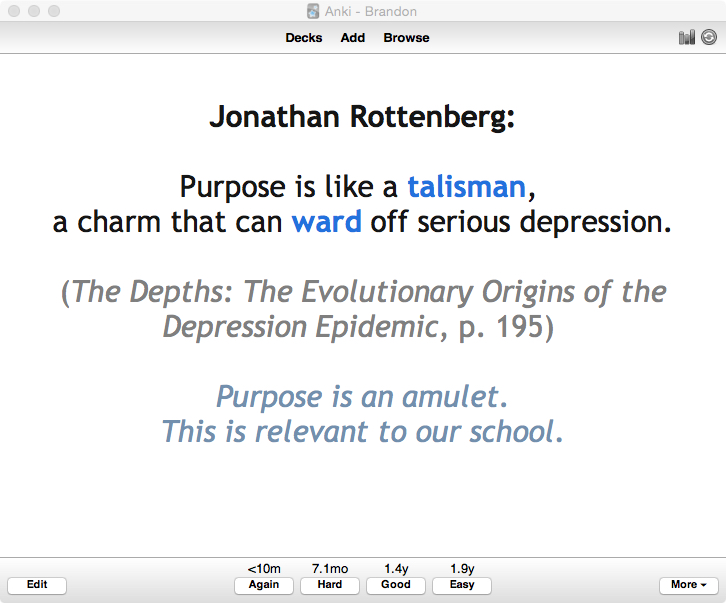Spaced repetition flashcards are my religion. Well: there's a problematically simple statement! (My actual religious views don't quite fit into a single, punchy sentence.) I'll put this a bit more straight-forwardly:
I have a collection of 5,972 flash cards. Each has been custom-made by me. Many of them are mind-changing quotes from various books and articles I've read:
That was the front — I've chosen two words to replace with [...]. When I see the card, I'm prompted to recall the crucial words that have been taken out:
I take the most exciting ideas from what I read, and put them into my personally-favorite spaced-repetition flashcard program — Anki, which can be downloaded for free at ankiSRS.net.
There are lots of ordinary flashcard programs out there. Many of them are pretty flashy, and easy to use: I'm looking at you, Quizlet!
They're all terrible. Or at least they're all terrible when it comes to the core purpose of learning: integrating knowledge into your mind for the long-term.
Spaced-repetition flashcard programs use the spacing effect (the link is to the Wikipedia page) to give you maximal memory with minimal reviews.
To simplify some complicated math: after the first time I see a flashcard, the program waits 10 minutes to show it to me again.
Then it waits 1 day. Then 3 days. Then 1 week. Then 3 weeks. Then 2 months. Then 6 months. Then 1.5 years. Then 4 years. Then 12 years.
With only a handful of reviews, I can secure anything I want to remember, forever.
And then (and here's the religion part!) each day, I review the cards that Anki tells me to review. Amazingly, this only takes 5–10 minutes — but that's enough for Anki to preserve every flashcard in my long-term memory.
I've been doing this nearly every day for six or seven years now.
It's part of my quest to cultivate genius in myself.
For years, I've been scratching my head as to why more people haven't heard of the spacing effect. And just this morning, the brilliant (and always-worth-reading) educational reporter Annie Murphy Paul, touched on the spacing effect in her newsletter, The Brilliant Report.
Now, sometimes when I tell people about this, they scrunch their foreheads: Why on Earth would you want to just memorize this information? they seem to be saying. (I know that, because sometimes they actually say that aloud!)
Well, I don't just want to "memorize" the stuff! That would be stupid. I use Anki to plant ideas in my mind. I use it to put every amazing idea I read into my long-term memory, where it can blend together with every other thing that I learn.
People sometimes refer to me as "creative". Well: this is one of the secrets to my creativity.
Justine Musk, author and former wife of entrepreneur Elon Musk, wrote that the secret to innovation is to combine different worlds of knowledge:
bring them together in a way that will introduce hot ideas to each other, so they can have idea sex and make idea babies that no one has seen before...
That's what Anki is for me: an orgy of ideas! (My apologies for, um, that metaphor.)
I have so much more to write about Anki, and about spaced repetition more generally. For now, I'll hold back, and just ask a few questions:
- How could a spaced-repetition flashcard program infuse every aspect of the curriculum?
- What would it mean if we could guarantee students that everything they want to remember, could be remembered forever (with minimal work)?
- Is it possible for a new kind of school to regularly help students cultivate genius?
I've previously pursued a few of these ideas in a bit more depth on this blog — especially in my posts about planting ideas, and about using "Leitner boxes" (which are a sort of physical flashcard system that uses a rudimentary spacing effect — now in use at the Island Academy of Hilton Head!).



